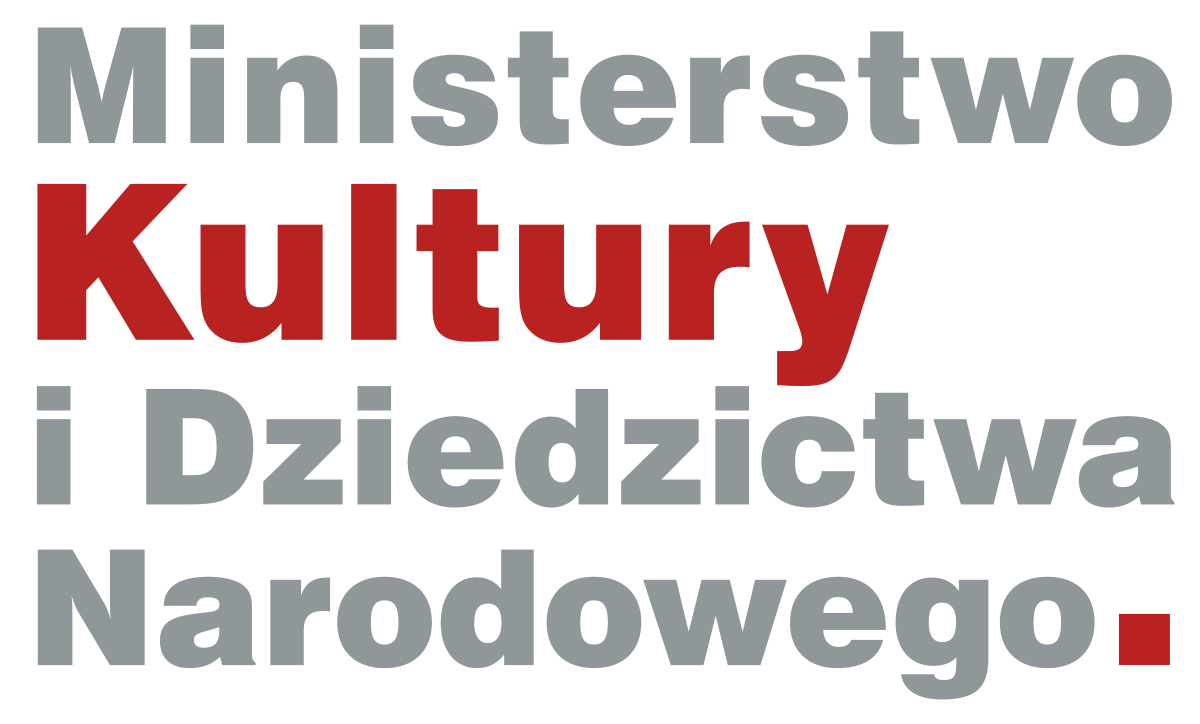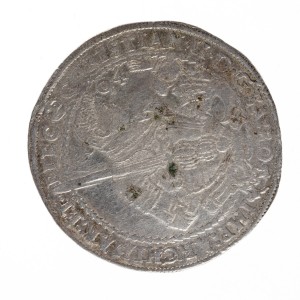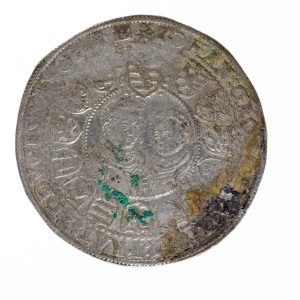The described treasure consists of 265 silver coins dated for years 1604-1623. Some of the coins were collected by the king Zygmunt III Wizards. The only exception is the Saxon Thaler of Krystian II created in 1604. The rest of the treasure are coins created somewhere in the Kingdom of Poland. On the heads of the coins is the emblem of Kingdom of Poland - the White Eagle and emblem of Lithuania - Pogonia, as well as coat of arms of the Waza royal family.
| Title | COINS |
| Author | |
| Meta keywords | Churches, Church in Poland, Sanctuary in Kębło, Wąwolnica Poland |
| Description | The described treasure consists of 265 silver coins dated for years 1604-1623. Some of the coins were collected by the king Zygmunt III Wizards. The only exception is the Saxon Thaler of Krystian II created in 1604. The rest of the treasure are coins created somewhere in the Kingdom of Poland. On the heads of the coins is the emblem of Kingdom of Poland - the White Eagle and emblem of Lithuania - Pogonia, as well as coat of arms of the Waza royal family. On the rim of the coin engraved “SIGI 3 DG REX.PMDL, which means Sigismundus Tertius Dei Gratia Rex Poloniae, Magnus Dux Lithuaniae, that is Zygmunt III Waza by God’s Grace King of Poland, Great Prince of Lithuania. The number 3 in brackets that divides the inscription means that the coin is worth 3 half’s of grosz. On the flip side we can see the royal apple topped with a cross. Inside the apple number 24 means that the coin is worth one twenty-fourth of a Thaler. On both sides of the cross there are numbers of the year of creation of the coin and the inscription: MONE*NO REG POLO, which means Moneta Nova Regni Poloniae. The inscription is divided by the coat of arms of Sas Nicholas Daniłowicz who was the crown treasurer in years 1616 to 1624. On the coins form 1614 and 1615 we can see the emblem of Stanislaw Wawrzecki the crown treasurer in years 1614 to 1616. Second largest group of coins in from described treasure are coins of Zygmunt III. There 54 of them. They have a picture of the king Zygmunt III on the front and the inscription: SIG.III.DG.REX.POL.MDL, which means Sigismundus Tertius Dei Gratia Rex Poloniae, Magnus Dux Lithuaniae, that is Zygmunt III Waza by God’s Grace King of Poland, Great Prince of Lithuania. On the other side there are emblems of Poland and Lithuania and the coat of arms of the Waza family. Between them we can see Arabic numerals that indicate the year. Above the emblems there is the number III (like three grosz) and under the em inscription in three lines GROS-ARGE TRIP-REGN POLONI This inscription means Grossus Argentus Triplex Regni Poloniae, that is triple silver grosz of Kingdom of Poland. Finally we see the emblem of Sas Nicholas Daniłowicz, the crown treasurer in years 1616 to 1624. All the coins were minted in royal mints. There are no coins from Lithuanian or city mints. The collection of coins of low face value is completed by five orts. One crown ort from 1622 and four Gdańsk orts: two orts from 1615, one from 1618 and one from 1620. Orts are filler coins between low value coins and Thalers. At the beginning they were worth 10 groszy that was one fourth of a Thaler’s worth. Their value was quickly decreased and finally they were worth eighteen groszy. Crown ort from 1622 is not the prettiest coin. On one side we can see not so good portrait of Zygmunt III Waza, but the key it is quite complex. SIGIS-IIIDG-REX-POL-LI-RUS-PRU-M, which means: Sigismundus Tertius Dei Gratia Rex Poloniae, Magnus Dux Lithuaniae, Russiae, Prussiae, Masoviae, that is Zygmunt III by God’s Grace King of Poland, Great Prince of Lithuania, Russia, Prussia, Masovia. On the other side there are emblems of the Crown, Lithuania and the emblem of Waza family and the continuation of royal tittles: SAM-LIV-NEC-N-SV-GOT-VAN-Q-HRI-R, which means Samogitiae. Livoniae, nec non Svecorum, Gothorum, Vandalorum que Haereditarius Rex, that is the Prince of Samogitia, Livonia as well as of Sweeden, Gothland, Wandalia hereditary king. At the bottom already familiar emblem of Sas. Unfortunately the complex key of this coin did not match the value. From all the coins from the described treasure, the best state and quality were four Gdańsk orts. The mint in Gdańsk had the pleasure of minting coins with the emblem of city of Gdańsk it released a coin of extraordinary value. These coins were special both due to beautiful stamp and good quality silver. Coin makers of the highest class personally cared for incredible portrait of the king and the dignified look of the emblem of Gdańsk. On two of the orts (from 1618 and 1620) we can see initials S.A. These are initials of Samuel Ammon - a coin maker from the Zygmunt III Waza era. He worked for the Gdańsk mint in years 1613 to 1621. On the 1620 ort at the feet of Gdansk lions there are additional letters S.B. These are the initials of Stanzel Berman who was the mint master of the Mint in Gdańsk in years 1618 to 1635. On three of the orts there is a picture of a bear’s foot which was the symbol of Daniel Kluwer - the tenant of the mint in Gdańsk in years 1608 to 1618. There is a round inscription: SIGISMUNDUS:III;D:G:REX:POL:M:D:L:R:PRUS, that is Sigismundus Tertius Dei Gratia Rex Poloniae, Magnus Dux Lithuaniae, Russiae, Prussiae which means Zygmunt III by God’s grace King of Poland, great prince of Lithuania, Russia and Prussia and at the back there is a beautiful emblem of the city Gdańsk and the inscription: MOMETA-CIVIT: GEDANENSIS which means Moneta Civitatis Gedanensis that is Coin of the city Gdańsk. An interesting part of the treasure is the foreign coin. It is a Saxon Thaler of Krystian II Wettyn. On the front of the coin we can see the portrait of the prince elector Krystian II holding a two-handed sword. The ducal tittle in the inscription. The back of the coin holds portraits of Krystian II’s two sons: John George and August. John George succeeded the throne after his father in 1611. Around the portraits there are 14 emblems of Saxon grounds. The key says Johan George and August, brothers and princes of Saxony. In conclusion, the described treasure is consistent and it all comes from the Zygmunt III Waza reign. It was hidden in 1623 or short thereafter. The period of minting the coins (19 years) and the fact that all the coins came from royal mints suggests that the treasure was hidden by A citizen of the Crown in the time of minting those coins. We do not know as to why the owner of the treasure decided to hide it, but we do know that something bad must have happened to him as he never took back his treasure. Thanks to that fact, we can now admire the large collection of coins from the golden age of polish coinage. |
| Place of publication | Wąwolnica, Poland |
| Date of publication | 1604-1623 |
| Type | COINS |
| Dimension | |
| Rights owner | Roman Catholic Parish of St. Adalbert in Wąwolnica |
| Digitization | Roman Catholic Parish of St. Adalbert in Wąwolnica |
| Location of the original | located in the chapel of the Holy Mother of Kębło, Roman Catholic Parish of St. Adalbert in Wąwolnica, Poland |







